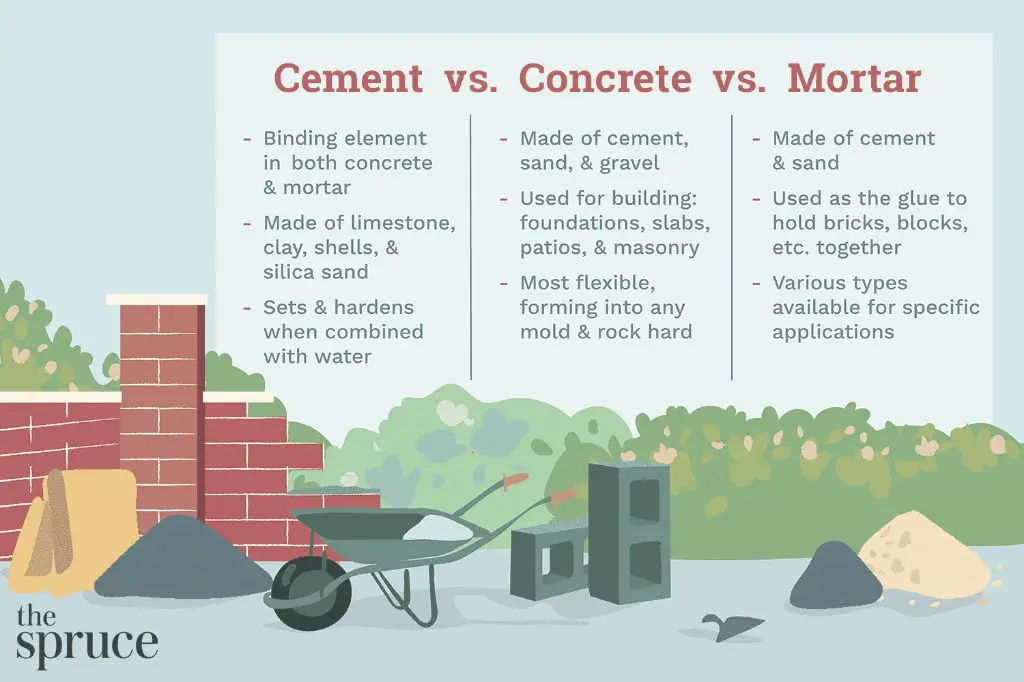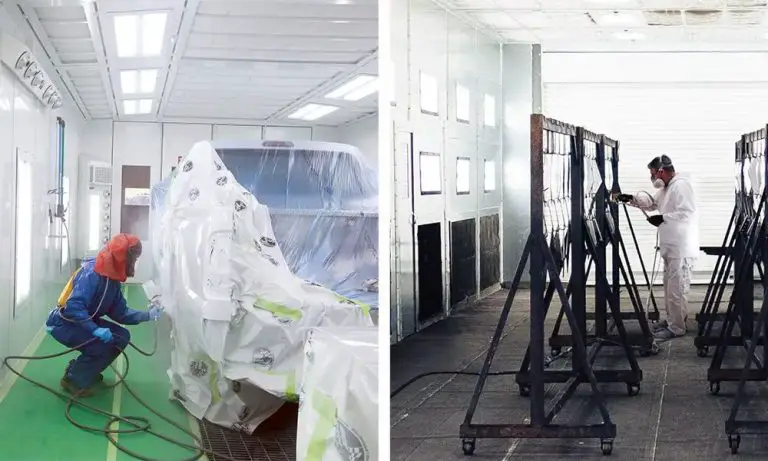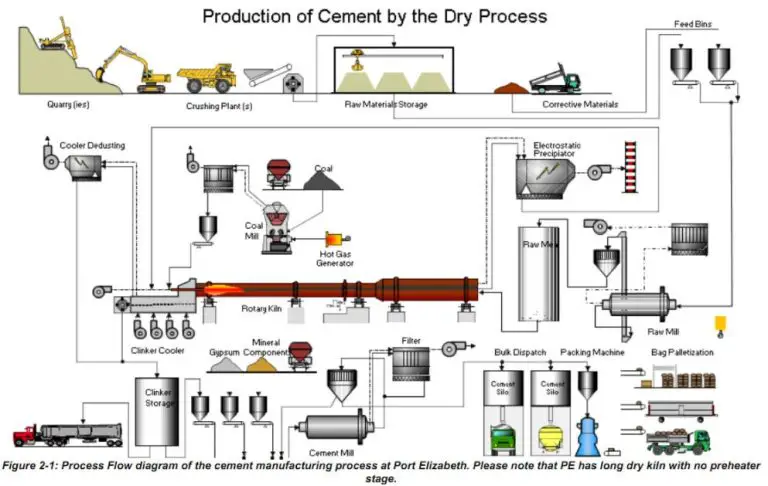What Is The Difference Between Mortar And Refractory Cement?
Mortar and refractory cement are both binding agents used in masonry construction. Mortar is used to bind bricks or blocks together, while refractory cement is used specifically to withstand high temperatures, such as in furnaces or fireplaces. Knowing the difference between the two is important when selecting the right material for specific applications. Using the wrong cement can lead to catastrophic failure in high heat conditions. This article will examine the key differences between mortar and refractory cement in terms of heat tolerance, chemical composition, drying/curing, workability, and typical use cases.
Definition of Mortar
According to the Merriam-Webster Dictionary[1], mortar is defined as “a mixture of sand with either clay or lime and water that hardens into a binding material.” It is commonly used as the bonding agent between bricks, stones, and other masonry blocks in construction and building. Cambridge Dictionary provides a similar definition, stating that mortar is “a mixture of sand, water, and cement or lime that is used to fix bricks or stones to each other when building walls.”[2]
In summary, mortar is a mixture of sand, a binder such as cement or lime, and water, used to bind bricks or blocks together in masonry construction. It hardens to provide adhesion between masonry units and improve the structural integrity of the finished construction.
Definition of Refractory Cement
Refractory cement is a heat-resistant cement used for applications that must withstand high temperatures ranging from 2,000°F to 3,000°F. Unlike standard cements and mortars, refractory cements contain a high proportion of calcium aluminate or other specialized heat-resistant compounds instead of calcium silicate. They are formulated to withstand the intense heats of furnaces, forges, incinerators and other high-temperature equipment.
Refractory cements are typically made from mixtures of alumina, silica and/or fire clay. The fire clay serves as a binder to hold the mixture together at high temperatures. Refractory cement can also be composed of calcium aluminate or other specialized compounds designed for extreme heat resistance. The chemistry and design of refractory cement make it capable of withstanding incredibly hot environments without breaking down.
Key Differences
There are some important differences between refractory cement and mortar in terms of their heat tolerance, chemical composition, and drying/curing process:
Refractory cement has a much higher heat tolerance than standard mortars. Refractory cements are designed to withstand temperatures up to 3,000°F or more, while standard mortars usually can’t withstand temperatures above 2,000°F before breaking down [1]. The high alumina and calcium aluminate content in refractory cements gives them superior heat resistance.

The chemical compositions of refractory cement and mortar differ as well. Refractory cements contain a higher percentage of calcium aluminate cements and fire clays, while standard mortars are primarily made of Portland cement, sand, and lime. Refractory cements also have specialized additives to increase their heat resistance [2].
Another key difference is that standard mortar dries and cures through hydration, while refractory cement sinters and sets using a chemical bonding process activated by heat. Refractory cement requires heat curing at over 200°F to fully harden [1].
Heat Tolerance
One of the most significant differences between mortar and refractory cement is their heat tolerance. Mortar is generally rated for temperatures up to 1000°F, while refractory cements are designed to withstand much higher temperatures.
Refractory cements are specifically engineered to resist extremely high heat and have a maximum service temperature of 2000°F or greater, with some rated as high as 3000°F or more. They contain specialized binders and aggregates selected for thermal stability that prevent them from softening or melting under high heat. This makes refractory cement well-suited for lining industrial furnaces, fireplaces, pizza ovens, and other high temperature applications where mortar would fail. Refractory cement derives its superior heat resistance from its chemical composition and ingredients (discussed further below).
In contrast, standard mortar contains binders like Portland cement that rapidly weaken above 1000°F. It does not have the specialized aggregates and binders capable of insulating and reflecting heat. For this reason, refractory cement is considered an “extreme temperature” insulation material while mortar has only moderate heat tolerance.
Chemical Composition
The main ingredients in standard mortar are Portland cement, lime, and sand. Portland cement acts as the binding agent that holds the mortar together while the lime improves workability and flexibility. Sand is added as an aggregate filler. The combination of these ingredients produces a durable material with adhesion and bonding properties for masonry applications.
Refractory cement has a different chemical composition optimized for high temperature applications. The key ingredients are calcium aluminate and specialty fire clays. Calcium aluminate promotes strength and resilience to thermal shock. Fire clays provide high temperature resistance. The unique formulation allows refractory cement to withstand temperatures up to 3000°F without breaking down. Unlike standard mortar, refractory cement does not contain Portland cement or sand.
The specific chemical composition of each material makes them suitable for very different purposes. Standard mortar works well for general construction while refractory cement is engineered for extreme heat environments like furnaces and fireplaces. Their distinct chemical properties produce optimal performance based on the intended application.
Sources:
https://mymaterialwarehouse.com/blogs/material-help-desk/refractory-cement-what-it-is-plus-5-things-you-need-to-know
https://kilnrefractory.com/blog/2020/04/16/the-difference-between-refractory-mortar-and-refractory-cement/
Drying/Curing
Mortar dries through a hydration process where the cement particles react with water to form hydrates that bind the mixture together into a solid material. This hydration process allows mortar to fully harden and gain strength over 7-28 days after application.
Refractory cement does not rely on a hydration process. Instead, it undergoes a process called sintering where it vitrifies or fuses into a solid mass when exposed to high temperatures. The raw materials combine and form new compounds that fill any pores and voids, increasing density. As the University of Utah explains, this sintering process also “welds” the particles together into a strong, heat resistant mass.
Proper sintering or curing of refractory cement requires steadily heating it to at least 1000°F-2000°F for several hours to ensure full vitrification occurs. Heating too rapidly can cause damage. Manufacturers recommend curing refractory cement per the product instructions before exposing it to high service temperatures. Full cure times may take 24 hours or longer.
Use Cases
Mortar and refractory cement are used in very different types of applications due to their differing properties. Here are some of the main uses for each material:
Mortar is commonly used for:
- Laying bricks and blocks in construction projects
- Creating renders and plasters on walls
- Pointing between bricks and blocks
Mortar is designed to cure and set at normal ambient temperatures, making it ideal for general construction applications.
Refractory cement is used for:
- Lining kilns and furnaces that reach extremely high temperatures
- Creating fireplaces and wood-burning stoves
- Lining high-temperature industrial equipment
- Manufacturing firebricks and other refractory materials
Refractory cement is formulated to withstand temperatures exceeding 1000°C without breaking down, unlike standard mortar. This makes it suitable for applications involving intense heat.
Refractory cement’s heat resistance allows it to be used in the construction of infrastructure for processes like smelting, glassmaking, and metal casting where materials are heated to very high temperatures.
Workability
One key difference between mortar and refractory cement is in their workability. Mortar tends to be much more workable and fluid when being placed, while refractory cement is stiffer and more semi-plastic in consistency. This occurs because of differences in their formulation.
Mortar is made with fine aggregate like sand or vermiculite added to the cementitious binder. This aggregate improves flow and makes the wet mortar easier to spread or trowel when laying bricks or blocks. Refractory cement does not contain these fine aggregates, so it is thicker in consistency like a stiff paste that can be somewhat molded but is not pourable or spreadable.
The increased workability of mortar makes it easier for construction projects with lots of brick or block laying. Refractory cement’s thicker paste-like consistency is better for small scale repairs or specialized high temperature applications where precise placement is needed. But in general, mortar will be a more fluid and workable material for broader use cases (MC Links, 2021).
Conclusion
In summary, the key differences between mortar and refractory cement are their heat tolerance, chemical composition, drying/curing properties, typical use cases, and workability. Mortar is designed for general construction purposes and can withstand moderate heat. Refractory cement is specifically formulated to withstand extremely high temperatures from things like furnaces and fireplaces. Mortar cures through hydration with water, while refractory cement undergoes a chemical setting reaction. Mortar is widely used for bricklaying, concrete repairs, tile setting, and stucco. Refractory cement has niche applications like lining high-heat equipment. Finally, mortar is thicker and sticker, which makes it easier to work with compared to refractory cement’s thinner, runnier consistency.
When choosing between mortar and refractory cement, consider the application. For general masonry work and construction repairs, standard mortar is the appropriate choice. But for specialized applications like fireplaces, pizza ovens, and industrial furnaces, refractory cement’s heat resistance makes it the better option.





